Class 10 History Chapter 2 Notes - Nationalism in India
| Table of contents |

|
| Introduction |

|
| The First World War, Khilafat and Non-Cooperation |

|
| Differing Strands within the Movement |

|
| Towards Civil Disobedience |

|
| The Sense of Collective Belonging |

|
| Conclusion |

|
Introduction
Nationalism in Europe was linked to the formation of nation-states and a new sense of identity. In India too, nationalism grew as part of the struggle against colonial rule. People from different regions, classes, and communities came together, though their experiences of colonialism and ideas of freedom were not always the same. Under Mahatma Gandhi’s leadership, the Congress tried to unite these groups into a common movement.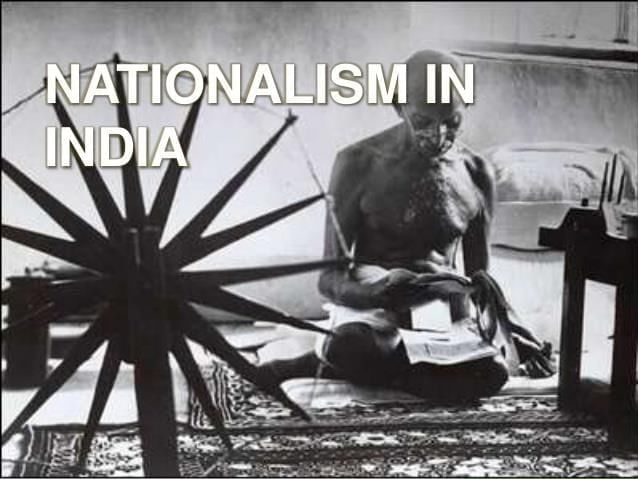
I. Modern Nationalism in Europe:
- Formation of Nation-States: Associated with creating new nation-states.
Identity and Belonging: Changed people’s understanding of their identity and sense of belonging. - New Symbols and Icons: Introduction of new symbols, icons, songs, and ideas that forged new links and redefined community boundaries.
- Long Process: The creation of national identity was a gradual process in most countries.
II. Growth of Nationalism in India:
- Anti-Colonial Movement: The rise of modern nationalism in India was closely linked to the anti-colonial struggle.
- Unity Through Struggle: People began to discover a shared unity through their fight against colonial rule.
- Shared Oppression: The experience of oppression under colonialism created a common bond among various groups.
- Varied Experiences: Different classes and groups experienced colonialism in diverse ways and had differing ideas about freedom.
III. Congress and Mahatma Gandhi:
- Forging Unity: The Indian National Congress, under Mahatma Gandhi, attempted to unite these diverse groups into one movement.
- Challenges: The process of creating unity was not without conflicts.
IV. Historical Focus:
- 1920s and Beyond: The chapter continues the narrative from the 1920s, focusing on the Non-Cooperation and Civil Disobedience Movements.
- Congress's Role: Examination of how the Congress sought to develop the national movement.
- Social Group Participation: Analysis of how various social groups participated in the movement.
- Capturing Imagination: Exploration of how nationalism captured the imagination of the Indian people.
V. Nationalism Capturing the Imagination of People
- New symbols, icons, songs, and ideas created links and redefined community boundaries.
- People's understanding of their identity and sense of belonging changed as nationalism grew.
- The making of a new national identity was a long and complex process.
- Nationalism in India was shaped by the anti-colonial movement and the experiences of different social groups.
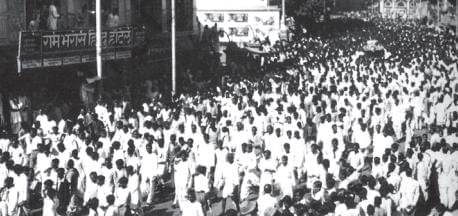 6 April 1919. Mass processions on the streets became a common feature during the national movement.
6 April 1919. Mass processions on the streets became a common feature during the national movement.
The First World War, Khilafat and Non-Cooperation
In the years after 1919, the national movement in India witnessed significant developments, with the movement spreading to new areas, incorporating new social groups, and adopting new modes of struggle. These developments can be understood by examining the following factors and their implications:
I. Economic and Political Situation Post-War
- The war led to a massive increase in defense expenditure, financed by war loans and increased taxes, including raised customs duties and the introduction of income tax.
- Prices doubled between 1913 and 1918, causing extreme hardship for the common people.
- Forced recruitment in rural areas led to widespread anger.
II. Crop Failures and Famine
- In 1918-19 and 1920-21, crops failed in many parts of India, resulting in severe food shortages.
- An influenza epidemic accompanied these famines.
- According to the 1921 census, 12 to 13 million people died due to famines and the epidemic.
- People hoped that their hardships would end after the war, but this did not happen.
- At this stage, a new leader appeared and suggested a new mode of struggle for the national movement.
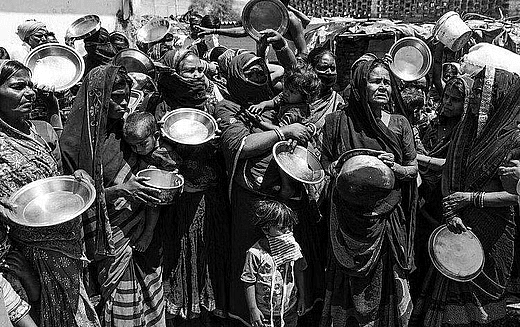 Pandemic and Hunger
Pandemic and Hunger
These developments had significant implications for the national movement, as they led to the expansion of the movement to new areas and the involvement of new social groups. Additionally, the new modes of struggle adopted during this period contributed to the evolution of the movement and its eventual success in achieving independence for India.
The Idea of Satyagraha
I. Concept of Satyagraha:
- Satyagraha, a method pioneered by Mahatma Gandhi, is based on the power of truth and the principle of non-violence.
- It advocates that if the cause is just, then one can confront injustice without physical force.
- Instead of using violence or seeking revenge, a satyagrahi (one who practices satyagraha) aims to appeal to the oppressor's conscience, convincing them of the truth of the cause.
- Gandhi believed that this approach could unite all Indians and lead to the triumph of truth.
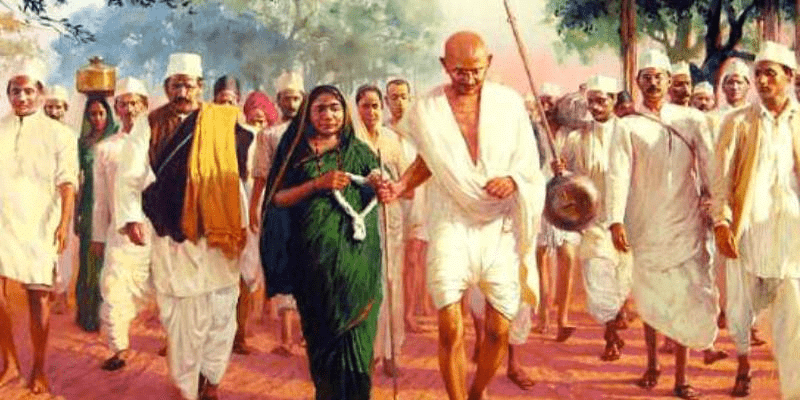 Satyagraha Movement
Satyagraha Movement
II. Satyagraha Movements in India
- Gandhi organized various satyagraha movements across India after his return to India in January 1915.
- He aimed to inspire people to struggle against oppression without using violence.
1. Champaran Movement (1917)
- Gandhi's first significant satyagraha in India was in Champaran, Bihar.
- He addressed the plight of the peasants under the oppressive plantation system imposed by British planters.
- The movement was successful in compelling the planters to agree to some reforms and better conditions for the peasants.
2. Kheda Satyagraha (1917)
- In 1917, Gandhi organized a satyagraha for the peasants of the Kheda district in Gujarat.
- The peasants were affected by crop failure and a plague epidemic.
- They were unable to pay the revenue due to these hardships.
- The peasants were demanding a relaxation in revenue collection.
3. Ahmedabad Cotton Mill Workers Satyagraha (1918)
- In Ahmedabad, Gandhi led a satyagraha among cotton mill workers who were protesting against poor working conditions and low wages.
- The movement aimed to secure fair wages and better working conditions for the workers.
- Gandhi’s approach helped to resolve the dispute with a compromise that benefited the workers.
The Rowlatt Act
I. Launching the Nationwide Satyagraha Against the Rowlatt Act (1919)
- Gandhiji initiated the nationwide satyagraha against the Rowlatt Act, which granted the government extensive powers to suppress political activities.
- The Act allowed detention of political prisoners without trial for up to two years.
- Non-violent civil disobedience was planned against the unjust laws, starting with a hartal on 6 April.
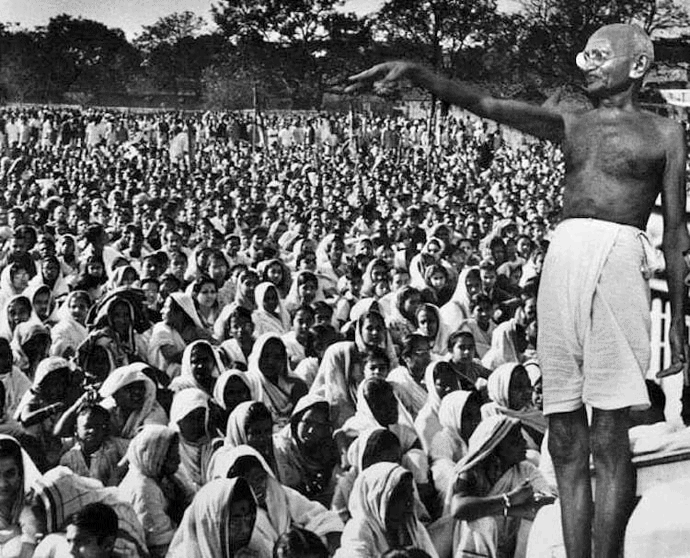 Resistance against Rowlatt Act
Resistance against Rowlatt Act
II. Protests, Strikes, and the British Administration's Response
- Rallies and strikes were organized in various cities, with workers going on strike and shops closing down, instilling fear in the British administration.
- Local leaders were arrested, and Mahatma Gandhi was barred from entering Delhi.
- On 10 April, the police fired upon a peaceful procession in Amritsar, resulting in widespread attacks on government buildings and the imposition of martial law.
III. Jallianwalla Bagh Incident (13 April 1919)
- On April 13th, the Jallianwala Bagh incident took place.
- A large crowd gathered at the enclosed Jallianwalla Bagh ground, some to protest against the government's repressive measures, while others were attending the Baisakhi fair.
- General Dyer entered the area, blocked the exits, and opened fire on the crowd, killing hundreds to create a feeling of terror and awe among satyagrahis.
- After the Jallianwala Bagh massacre, people became furious and went on strikes, clashes with police and attacks on government buildings.
IV. Aftermath and the Need for a Broader Movement
- Protests erupted in various north Indian towns, with strikes and clashes with the police.
- The government responded with brutal repression, humiliating and terrorizing people with actions such as forcing satyagrahis to crawl on the streets and flogging them.
- Mahatma Gandhi called off the movement and realized the need for a more broad-based movement, which required bringing Hindus and Muslims together.
V. Uniting Hindus and Muslims Through the Khilafat Issue
- Gandhiji saw an opportunity to unite Muslims and Hindus through the Khilafat issue.
- The First World War ended with the defeat of Ottoman Turkey, raising concerns about a harsh peace treaty being imposed on the Ottoman emperor, the Khalifa, who was also the spiritual head of the Islamic world.
- The Khilafat Committee was formed in Bombay in March 1919, and Muslim leaders like Muhammad Ali and Shaukat Ali began discussing the possibility of united mass action with Mahatma Gandhi.
- At the Calcutta session of the Congress in September 1920, Gandhiji convinced other leaders of the need to start a non-cooperation movement in support of Khilafat and swaraj.
Why Non-Cooperation?
I. Establishment of British Rule in India
- Mahatma Gandhi stated in Hind Swaraj (1909) that British rule in India was established and survived due to the cooperation of Indians.
- He believed that if Indians refused to cooperate, British rule would collapse within a year, leading to swaraj (self-rule).
II. Gandhi's Proposal for a Non-Cooperation Movement
Gandhi suggested a staged approach to the Non-Cooperation Movement.
- Stage 1: Surrender government-awarded titles, boycott civil services, army, police, courts, legislative councils, schools, and foreign goods.
- Stage 2: Launch a full civil disobedience campaign if the government used repression.
Throughout the summer of 1920, Gandhi and Shaukat Ali traveled extensively to mobilize support for the movement.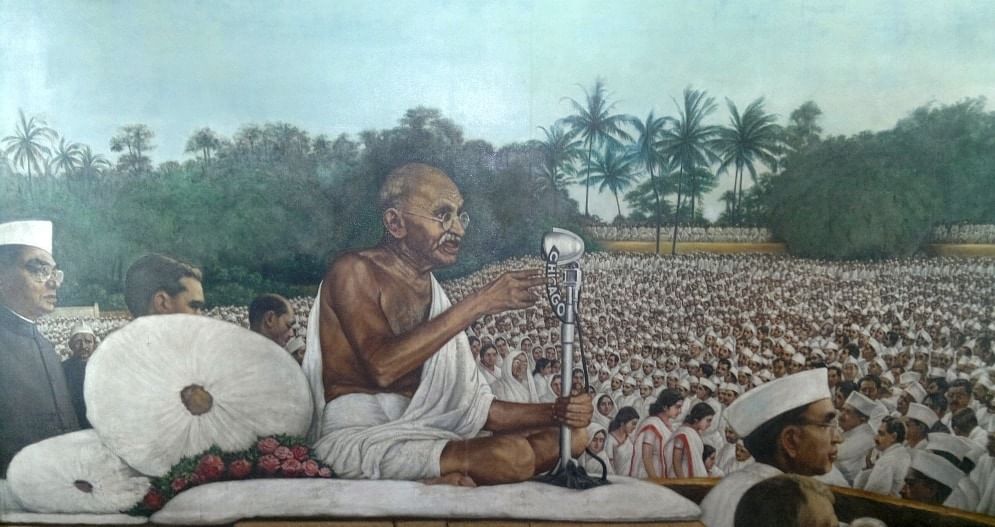 Mahatma Gandhi leading the Non-Cooperation movement
Mahatma Gandhi leading the Non-Cooperation movement
III. Concerns and Opposition within the Congress
- Many Congress members were concerned about the proposals, fearing potential violence and being reluctant to boycott the council elections scheduled for November 1920.
- From September to December 1920, there was an intense debate within the Congress regarding the movement.
IV. Resolution and Adoption
At the Congress session in Nagpur in December 1920, a compromise was reached, and the Non-Cooperation Programme was officially adopted.
V. Participation and Perceptions
- The movement saw widespread participation across various social groups, though the way different groups conceived of non-cooperation varied.
- Gandhi's approach aimed to unite diverse segments of Indian society in the struggle for independence.
Differing Strands within the Movement
In January 1921, the Non-Cooperation-Khilafat Movement began.
In this movement, various social groups participated, but the term meant different things to different people.
The Movement in the Towns
I. Initial Phase of the Movement
- The Non-Cooperation Movement began with the involvement of the middle class in urban areas.
- Thousands of students left government-controlled schools and colleges, while headmasters and teachers resigned.
- Lawyers also gave up their legal practices in support of the movement.
- Council elections were boycotted in most provinces, except Madras, where the Justice Party saw this as an opportunity to gain power.
II. Economic Effects
- Foreign goods were boycotted, and foreign cloth was burned in large bonfires.
- The import of foreign cloth halved from Rs 102 crore in 1921 to Rs 57 crore in 1922.
- Many merchants and traders refused to deal in foreign goods or finance foreign trade.
- The production of Indian textile mills and handlooms increased as people started wearing only Indian clothes.
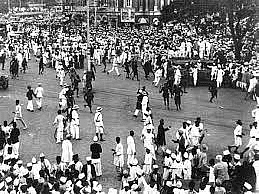
III. Challenges and Slowdown
- The movement faced several challenges, causing it to slow down eventually.
- Khadi cloth was more expensive than mass-produced mill cloth, making it difficult for the poor to continue boycotting mill cloth.
- The boycott of British institutions required alternative Indian institutions, which were slow to come up.
- As a result, students and teachers started returning to government schools, and lawyers resumed their work in government courts.
Rebellion in the Countryside
I. Non-Cooperation Movement in the Countryside
- The Non-Cooperation Movement extended from urban areas to rural regions, incorporating the struggles of peasants and tribals.
- Awadh's peasant movement led by Baba Ramchandra, a former indentured laborer in Fiji.
- Protests against high rents, various cesses, and forced labor (begar) by landlords.
- Demand for reduced revenue, abolition of begar, and social boycott of oppressive landlords.
- The Oudh Kisan Sabha was established in October 1920, led by Jawaharlal Nehru, Baba Ramchandra, and others. Within a month, over 300 branches were set up in the region.
- Congress aimed to integrate Awadh peasant struggle into the Non-Cooperation Movement.
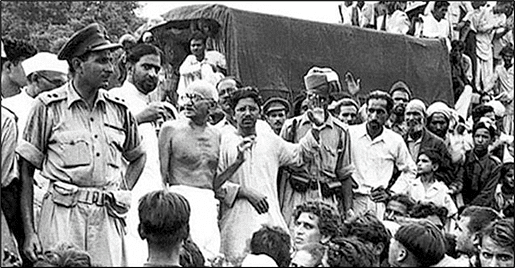
II. Peasant Movement and Congress Leadership
- The peasant movement took forms that were not approved by the Congress leadership, including attacks on landlords' houses, looting bazaars, and seizure of grain hoards.
- Rumors spread that Gandhi had sanctioned tax avoidance and land redistribution.
- The Congress leadership struggled with these radical actions and the invocation of Gandhi’s name to justify them.
III. Tribal Peasants and Swaraj Interpretation
- In the Gudem Hills of Andhra Pradesh, a guerrilla movement emerged in the early 1920s, which was not aligned with the Congress's non-violent approach.
- Colonial government restricted access to forest resources, affecting livelihoods and traditional rights.
- Hill people revolted against forced labor (begar) for road building.
- Alluri Sitaram Raju emerged as a leader, claiming special powers and invoking Gandhi’s influence to encourage khadi wear and abstinence from alcohol.
- Raju advocated for the use of force rather than non-violence to achieve independence. His movement included attacks on police stations and British officials.
- Encouraged wearing khadi and giving up drinking, but advocated for use of force to achieve swaraj.
- Guerrilla warfare against British officials and police stations to achieve independence.
- Raju captured and executed in 1924, becoming a folk hero.
Swaraj in the Plantations
Workers' Understanding of Mahatma Gandhi and Swaraj
- Plantation workers in Assam saw freedom as the right to move freely and maintain a connection with their villages.
- The Inland Emigration Act of 1859 restricted their movement, keeping them confined to tea gardens.
Non-Cooperation Movement and Plantation Workers
- Thousands of workers defied authorities, left plantations, and attempted to return to their villages, believing Gandhi Rai would give them land.
- They believed in the promise of ‘Gandhi Raj,’ expecting land distribution in their villages.
- These workers never reached their destinations due to a railway and steamer strike, and were caught and beaten by the police.
Visions of Swaraj
- Movements were not defined by Congress programmes, but workers interpreted swaraj in their own ways.
- Their actions and aspirations reflected a broader vision of freedom, despite not being fully informed by Congress directives.
Emotional Connection to All-India Agitation
- Tribals chanting Gandhi's name and demanding 'Swatantra Bharat' showed their emotional connection to a larger movement.
- They identified with a movement beyond their immediate locality when acting in Gandhi's name or linking their actions to the Congress.
Towards Civil Disobedience
Withdrawal of Non-Cooperation Movement
- In February 1922, Mahatma Gandhi withdrew the Non-Cooperation Movement due to increasing violence.
- Gandhi believed that satyagrahis needed proper training before participating in mass struggles.
Swaraj Party Formation and Internal Debates
- Some Congress leaders, like C.R. Das and Motilal Nehru, wanted to participate in provincial council elections and formed the Swaraj Party.
- Younger leaders, such as Jawaharlal Nehru and Subhas Chandra Bose, pushed for more radical mass agitation and full independence.
Impact of Worldwide Economic Depression
- Agricultural prices fell from 1926, leading to a decline in exports and difficulty for peasants to pay their revenue.
- By 1930, the Indian countryside was in turmoil due to the economic depression.
Simon Commission and Opposition
- The Tory government in Britain set up a Statutory Commission under Sir John Simon to review the constitutional system in India.
- The commission faced opposition in India as it had no Indian members, leading to protests with the slogan 'Go back Simon'.
- All parties, including the Congress and the Muslim League, took part in the demonstrations against the commission.
Viceroy's Offer and Demand for Purna Swaraj
- Viceroy Lord Irwin announced a vague offer of 'dominion status' for India and a Round Table Conference to discuss a future constitution in October 1929.
- This offer did not satisfy Congress leaders, and the radicals, led by Jawaharlal Nehru and Subhas Chandra Bose, became more assertive.
- In December 1929, the Lahore Congress, under Nehru's presidency, formalized the demand for 'Purna Swaraj' or full independence for India.
- 26 January 1930 was declared as Independence Day, but celebrations received little attention.
- To make the concept of freedom more relatable, Mahatma Gandhi sought to connect it to concrete issues of everyday life.
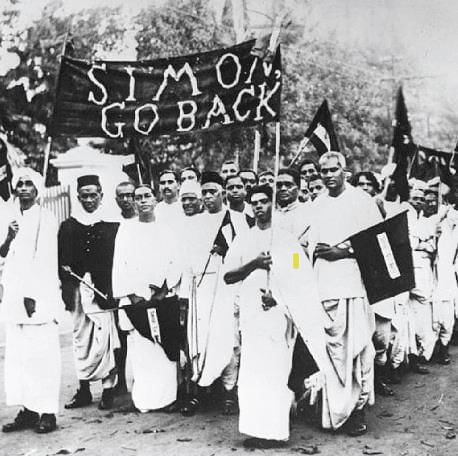
The Salt March & the Civil Disobedience Movement
Demands Letter and Ultimatum to Viceroy Irwin
- Gandhi sent a letter on 31 January 1930, stating eleven demands to unite the Indian society.
- The most significant demand was the abolition of the salt tax, which affected both rich and poor.
- If demands were not met by 11 March, the Congress would launch a civil disobedience campaign.
- Irwin refused to negotiate, leading to the start of the Salt March.
The Salt March
- Gandhi and 78 volunteers marched 240 miles from Sabarmati to Dandi.
- The march lasted 24 days, with the participants walking about 10 miles a day.
- Thousands gathered to listen to Gandhi's speeches on swaraj and peaceful defiance.
- On 6 April, Gandhi reached Dandi and broke the law by making salt from sea water.
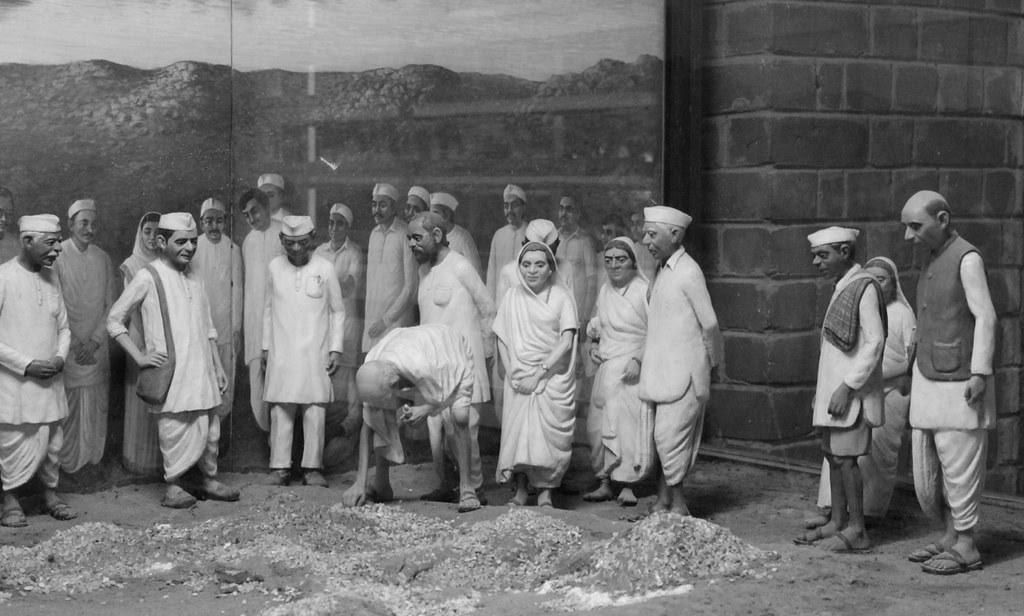 Depiction of Salt March led by Mahatma Gandhi and his followers
Depiction of Salt March led by Mahatma Gandhi and his followers
The Civil Disobedience Movement
- Different from Non-Cooperation Movement as people were asked to break colonial laws.
- Thousands broke the salt law, boycotted foreign cloth, and picketed liquor shops.
- Peasants refused to pay taxes, village officials resigned, and forest people violated forest laws.
- Colonial government arrested Congress leaders, leading to violent clashes and repressive measures.
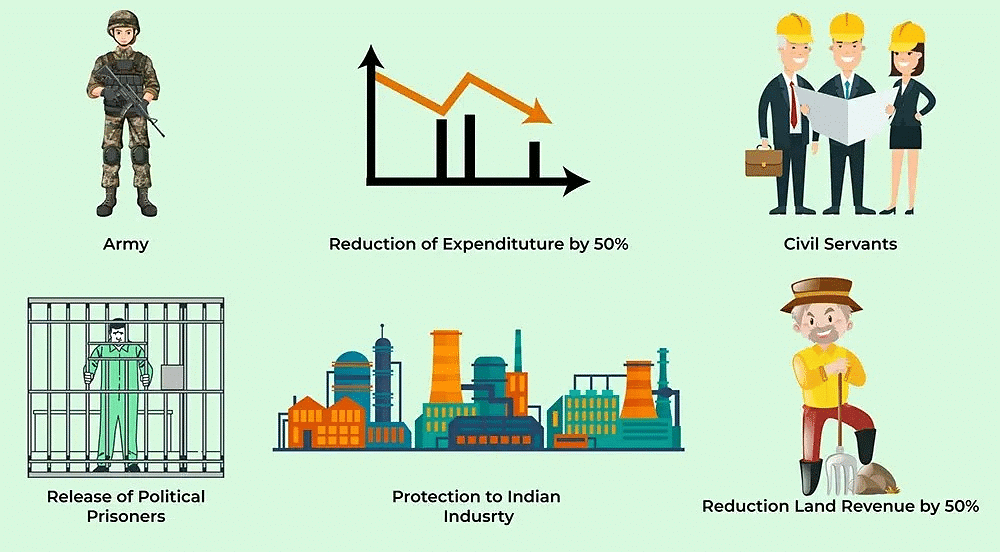 Demands of Civil Disobedience Movement
Demands of Civil Disobedience Movement
The Gandhi-Irwin Pact and the Round Table Conference
- Gandhi called off the movement and agreed to participate in the Round Table Conference in London.
- The government released political prisoners in return. Negotiations in London broke down, and Gandhi returned disappointed.
- Back in India, the government started a new cycle of repression, and Gandhi relaunched the movement.
The Movement's Decline
- The Civil Disobedience Movement continued for over a year but lost momentum by 1934.
- Gandhi's efforts, however, remained a significant part of India's struggle for independence.
How Participants saw the Movement
Participation of Different Social Groups in the Civil Disobedience Movement
1. Rich peasant communities (Patidars of Gujarat, Jats of Uttar Pradesh)
- Hit hard by the trade depression and falling prices.
- Supported the movement to fight high revenues.
- Disappointed when movement called off without revenue rates revision.
2. Poorer peasantry
- Struggled with rent payments to landlord.
- Joined radical movements led by Socialists and Communists.
- Uncertain relationship with Congress due to Congress' reluctance to support 'no rent' campaigns.
Role of the Business Classes- Indian merchants and industrialists
- Made huge profits during World War I
- Opposed colonial policies restricting business activities
- Formed Indian Industrial and Commercial Congress (1920) and Federation of Indian Chamber of Commerce and Industries (FICCI) (1927)
- Supported the Civil Disobedience Movement initially, but became apprehensive later.
Involvement of Industrial Working Class
- Limited participation in the movement
- Distanced themselves as industrialists came closer to Congress
- Some workers participated in boycott of foreign goods, strikes, and protests
- Congress reluctant to include workers' demands in its program
Participation of Women in the Movement
- Large-scale participation in various activities
- Listening to Gandhiji, protest marches, manufacturing salt, picketing liquor shops
- Women from high-caste urban families and rich peasant rural households
- Saw service to the nation as a sacred duty
- Limited change in the position of women
- Gandhiji believed women's primary duty was in the home
- Congress reluctant to allow women in positions of authority within the organization
The Limits of Civil Disobedience
Untouchables and the Concept of Swaraj
- Untouchables, or dalits, felt ignored by the Congress due to fear of offending conservative high-caste Hindus.
- Gandhi aimed to eliminate untouchability, calling them harijan (children of God) and advocating for their rights to public spaces and amenities.
- However, many dalit leaders sought political solutions, such as reserved seats in educational institutions and separate electorates.
- Despite Gandhi's efforts, dalit participation in the Civil Disobedience Movement remained limited.
Dr B.R. Ambedkar and the Depressed Classes Association
- Ambedkar organized the dalits into the Depressed Classes Association in 1930.
- He clashed with Gandhi at the second Round Table Conference, demanding separate electorates for dalits.
- Following Gandhi's fast unto death, Ambedkar agreed to the Poona Pact, which provided reserved seats for Depressed Classes but with a general electorate.
- Dalit movement remained cautious of the Congress-led national movement.
Muslim Response to Civil Disobedience Movement
- Many Muslim organizations felt alienated from the Congress after the decline of the Non-Cooperation-Khilafat movement.
- Congress's association with Hindu nationalist groups and communal clashes further deepened the divide between Hindus and Muslims.
- Efforts to forge unity between the Congress and the Muslim League failed due to disagreements over representation in future assemblies.
- Jinnah was willing to give up separate electorates in exchange for reserved seats and proportional representation in Muslim-dominated provinces, but negotiations fell apart.
Atmosphere of Suspicion and Distrust
- When the Civil Disobedience Movement started, there was already suspicion and distrust between Hindus and Muslims.
- Many Muslims felt alienated from the Congress and were concerned about their status as a minority within India.
- As a result, large sections of Muslims did not respond to the call for a united struggle during the Civil Disobedience Movement.
The Sense of Collective Belonging
Nationalism and Collective Belonging
- Nationalism spreads when people believe they are part of the same nation
- Unity develops through shared experiences and cultural processes
- History, fiction, folklore, songs, popular prints, and symbols contribute to nationalism
Visual Symbols of National Identity
- In the twentieth century, India's identity was associated with the image of Bharat Mata
- Created by Bankim Chandra Chattopadhyay in the 1870s through the hymn 'Vande Mataram'
- The image evolved over time and devotion to it signified nationalism
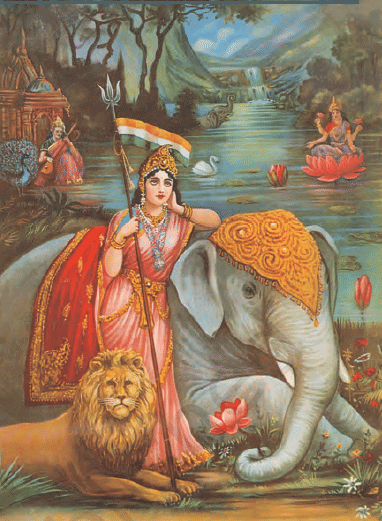 Bharat Mata
Bharat Mata
Revival of Indian Folklore
- Nationalists recorded folk tales, songs, and legends to preserve traditional culture
- Rabindranath Tagore and Natesa Sastri were prominent figures in the folk revival movement
- Folklore was considered national literature and a representation of people's true thoughts and characteristics
Icons and Symbols in Unifying People
- Nationalist leaders used icons and symbols to inspire unity and nationalism
- Tricolour flags were designed during the Swadeshi movement and by Gandhiji
- Carrying and displaying the flag became a symbol of defiance
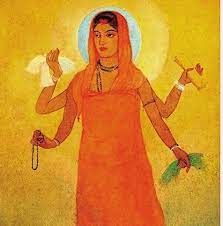 Bharat Mata, Abanindranath Tagore, 1905
Bharat Mata, Abanindranath Tagore, 1905
Reinterpretation of History
- Indians sought to instill pride in the nation by reinterpreting history
- They focused on the glorious achievements in ancient times, followed by a period of decline under colonization
- Nationalist histories aimed to inspire pride and a desire for change
Issues in Unifying People
- When the glorified past was predominantly Hindu, people of other communities felt excluded
- The challenge was to create a sense of unity while maintaining the diverse cultural identity of India
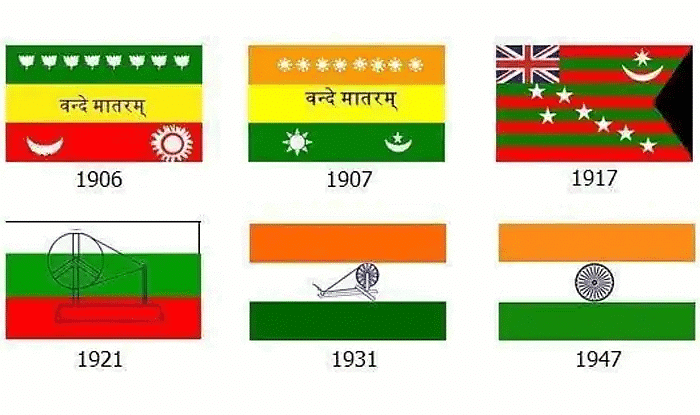
Conclusion
- In the first half of the twentieth century, various groups and classes of Indians came together for the struggle for independence.
- The Congress under the leadership of Mahatma Gandhi attempted to resolve differences and ensure that the demands of one group did not alienate another.
- In other words, what was emerging as a nation with many voices wanting freedom from colonial rule.
Quit India Movement (1942) – Key Points
- Cause: Failure of Cripps Mission & WWII discontent.
- 14 Jul 1942 (Wardha): Congress passed Quit India resolution.
- 8 Aug 1942 (Bombay): Gandhi’s “Do or Die” call.
- Nature: Non-violent mass struggle with hartals, protests, slogans.
- Leaders: Jayprakash Narayan, Aruna Asaf Ali, Ram Manohar Lohia.
- Women: Matangini Hazra, Kanaklata Barua, Rama Devi.
- Result: Nationwide uprising; British repression; took over a year to crush.
|
66 videos|614 docs|79 tests
|
FAQs on Class 10 History Chapter 2 Notes - Nationalism in India
| 1. What were the key factors that led to the rise of nationalism in India during the First World War? |  |
| 2. How did the Khilafat Movement contribute to the Indian Nationalist Movement? |  |
| 3. What were the differing strands within the Indian Nationalist Movement during the Non-Cooperation Movement? |  |
| 4. What was the significance of the Civil Disobedience Movement in the context of Indian nationalism? |  |
| 5. How did a sense of collective belonging develop among Indians during the nationalist movements? |  |





















